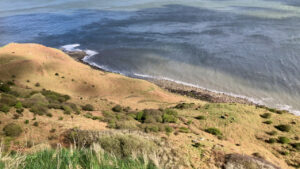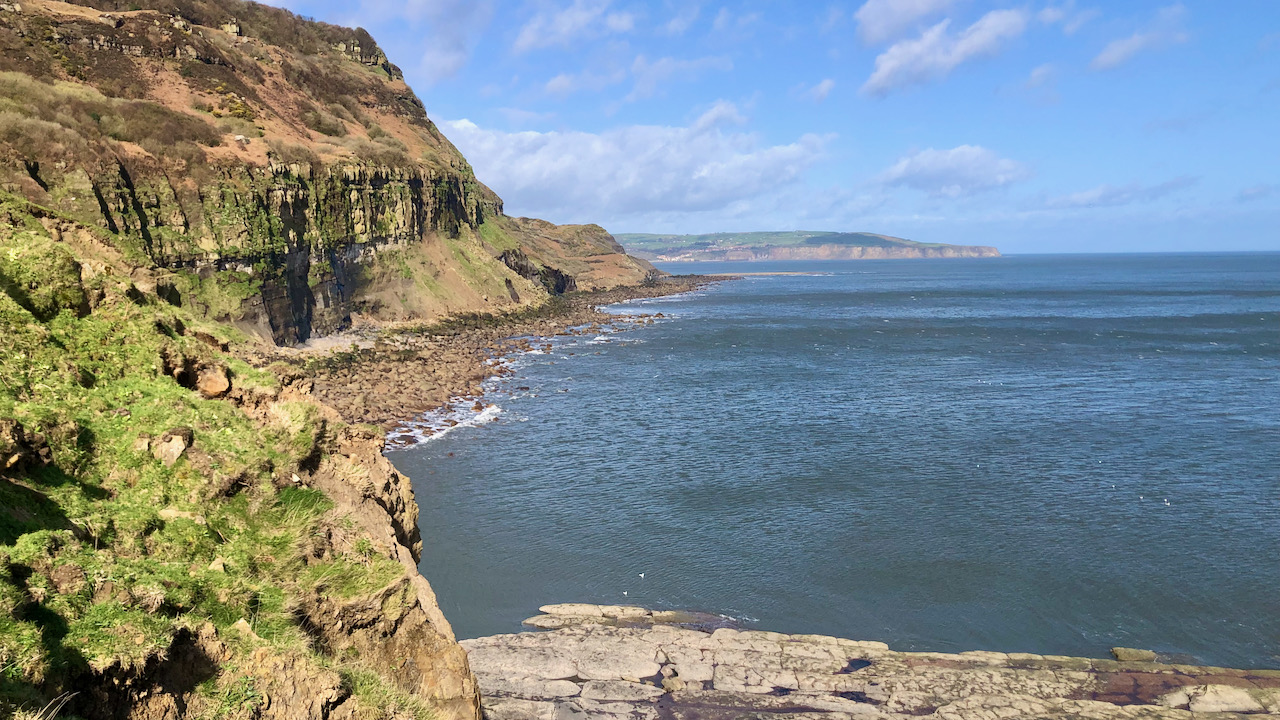I have never been an adrenaline junkie. The thrills of white-water kayaking or downhill skiing have never quite captivated me. However, present me with a new place to explore, and I find myself wholly satisfied.
The bold headland of Blea Wyke at Ravenscar, standing at an elevation of 180 metres, presents terraced undercliffs cascading one beneath the other until the rocky shoreline is reached. Upon consulting the modern OS map, I noticed a Public Footpath tracing a descent down the cliff to Blea Wyke Point. The temptation proved irresistible.
The start of the path proved easy to find, yet I soon encountered a hindrance in the form of a fallen tree, impeding further advancement. Though not insurmountable, without my rucksack, I might have managed a commando crawl beneath. Another path further south descended Common Cliff, its gradient steepening to near-verticality. Conveniently, a polypropylene rope had been affixed for the purpose of rappelling down. Soon both path and rope succumbed to increasing muddiness.
When the gradient began to ease, the path soon became indistinguishable from the many muddy cattle tracks left by the small herd of Highland Cows. Did they rappel down also?
 The path to Blea Wyke Point
The path to Blea Wyke PointAt the Point, the tide was out, revealing the scar, Blea Wyke Steel1STEEL: A ridge; a point or tongue of land; a precipice; a rock. 1898. English dialect dictionary Vol V R to S. Page 745.. I opted out of making that final descent, though I am certain the local fishermen would know the way. I started to puzzle over how the 20 passengers aboard the steamer Kaiser managed to scale the cliff when the vessel ran aground on the scar in July 19052‘Passengers and Crew Landed with Difficulty, | Shields Daily News | Tuesday 26 July 1904 | British Newspaper Archive’. 2024. Britishnewspaperarchive.co.uk <https://www.britishnewspaperarchive.co.uk/viewer/bl/0001168/19040726/076/0003> [accessed 6 April 2024].
The 1,600 ton vessel regularly traded between West Hartlepool and Hamburg. On a return journey, it was moving cautiously due to thick fog. The captain believed they were near Whitby. He and the crew of 30 remained onboard the stricken ship, and two tugs arrived to assist. But the heavy waves swept the decks, causing significant damage, leading to the steamer becoming a total wreck.
- 1STEEL: A ridge; a point or tongue of land; a precipice; a rock. 1898. English dialect dictionary Vol V R to S. Page 745.
- 2‘Passengers and Crew Landed with Difficulty, | Shields Daily News | Tuesday 26 July 1904 | British Newspaper Archive’. 2024. Britishnewspaperarchive.co.uk <https://www.britishnewspaperarchive.co.uk/viewer/bl/0001168/19040726/076/0003> [accessed 6 April 2024]

Leave a Reply